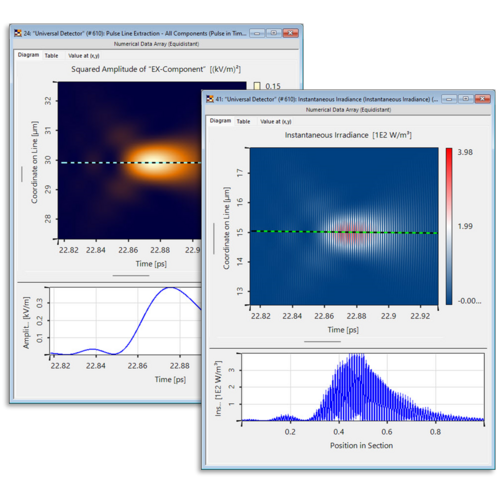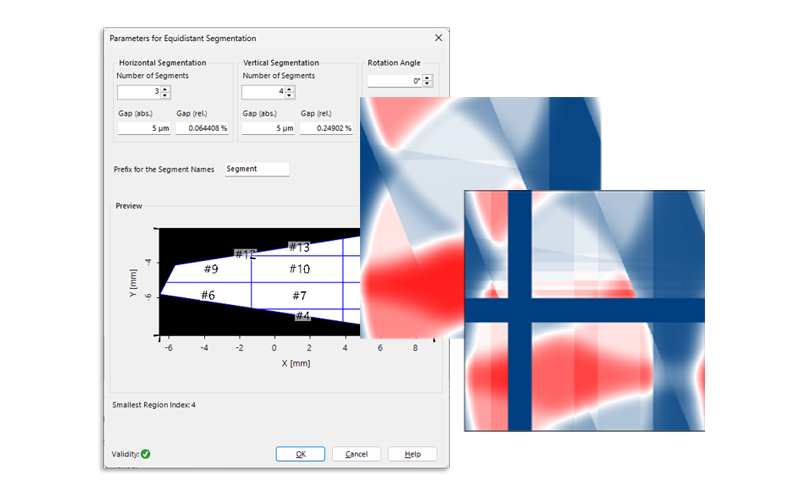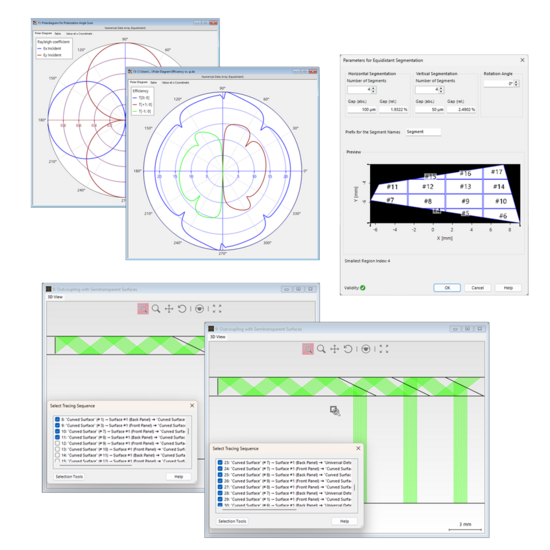The New VirtualLab Fusion 2025.1
VirtualLab Fusion’s development has always balanced infrastructure advancements with customer-driven solutions. For version 2025.1, we prioritized core improvements like the Plug-In architecture to build a stronger foundation. Moving forward, we’re shifting more toward solution-oriented features tailored to your real-world challenges.


Enabling Advanced Solutions
Ultrashort Pulse Modeling
- Unlock powerful insights into ultrashort pulse behavior with new detector models - now supporting precise evaluations of radiometric quantities (instantaneous irradiance, …) and pulse characteristics (pulse duration, …).
- Delivered as modular detector add-ons, the new evaluation function can be used inside the Plug-In Detector or enhance results directly from the main window.
- The new Plug-In Mode Generator enable effortless integration of spatial, temporal, and even spatio-temporal features right into the source model.


Analysis of Realistic Fabrication Constraints for Lightguides
- VirtualLab Fusion introduces advanced capabilities for simulating diffractive light guides, a key strength of our platform.
- A notable improvement is the ability to model gaps within segmented grating regions, a common fabrication constraint in real-world devices.
- With this tool, engineers and designers can now evaluate the impact of gaps between grating regions on optical performance.
- This enhancement provides deeper insights into device behavior, ensuring more accurate and practical simulation results for diffractive lightguide designs.
Evaluation of Müller Matrices
- VirtualLab Fusion now enables direct evaluation of system polarization properties through automated Müller and Jones matrix calculation.
- This analyzer tool extracts complete polarization transfer characteristics in a single operation, extending our existing polarization analysis capabilities.
- Engineers can now obtain full polarization response data for components like diffraction gratings or waveplates without manual configuration, streamlining the design of polarization-sensitive systems.

Core Capability Upgrades
- New Plug-In architecture
- Optimized workflow controls
- Enhanced data visualization
